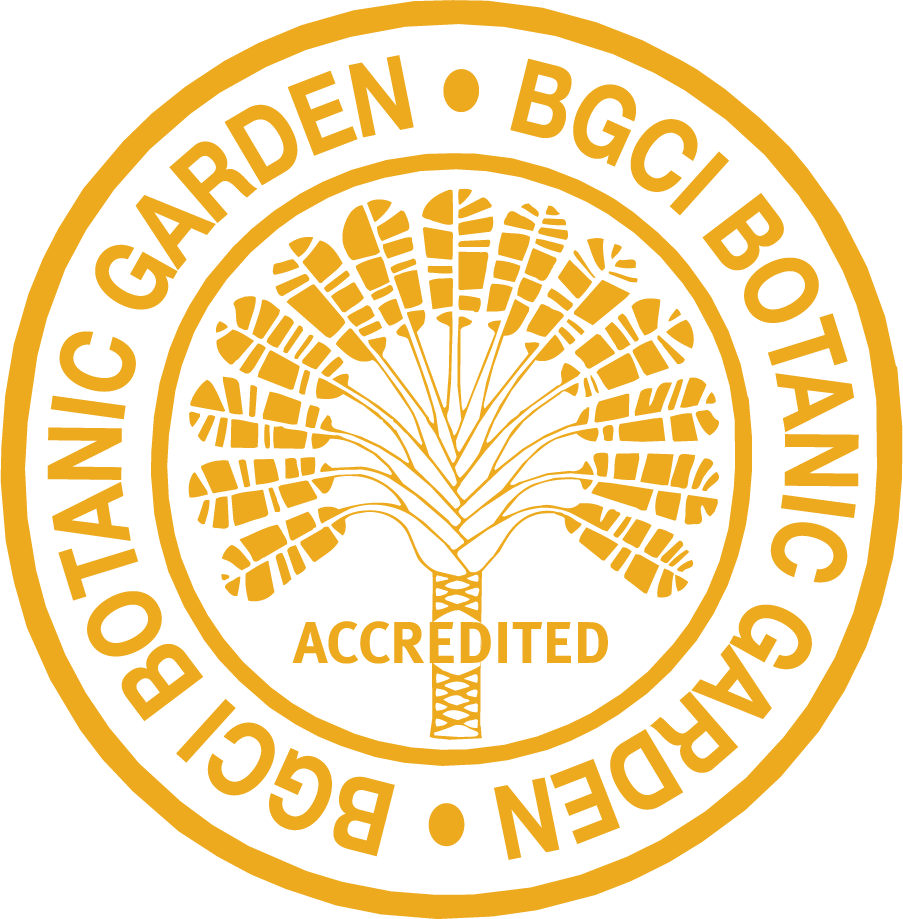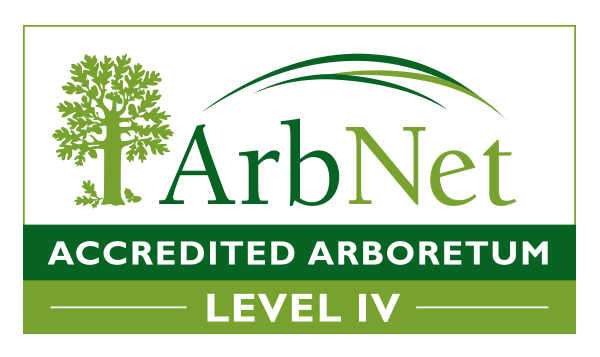This magnificent tree species produces the most highly valued hardwood in North America, with single trees sometimes sold for thousands of dollars. It is often used to make high quality furniture. The Black Walnut, along with other related species, is capable of deterring any nearby competition by exuding the chemical juglone from its roots and decaying leaves, which acts as a toxin. The seeds of the Black Walnut are difficult to extract from their shells, but are high in fat and make a delicious and nutritious snack for humans and wild animals alike. The husks of the seeds stain hands and clothing and have been used to make black dye.
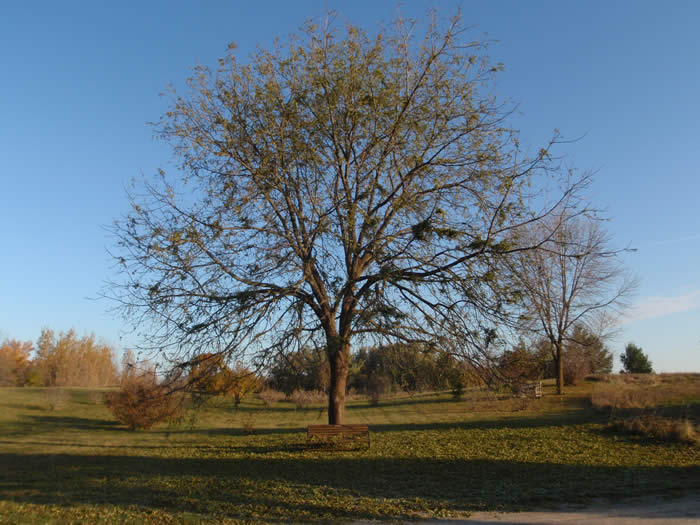
The Black Walnut can grow 20-30 m in height, with large ascending branches. Photo by Chris Earley.
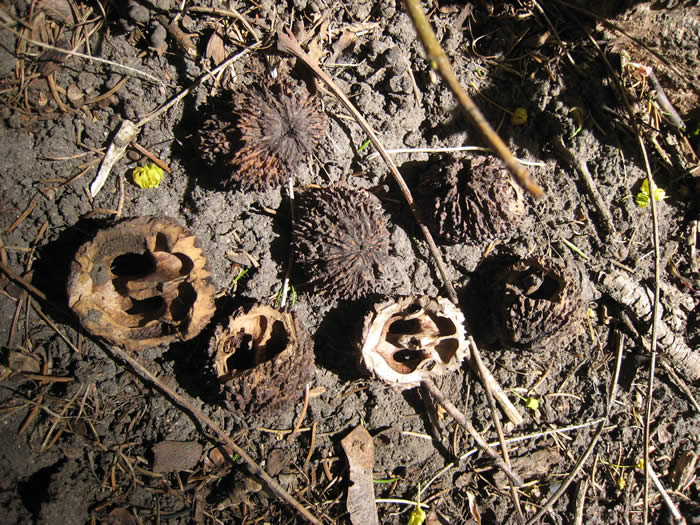
The Black Walnut seed husks also contain toxins, which have been used to develop insecticides. The inner seed is edible and can be used to make oil. Photo by Sean Fox.
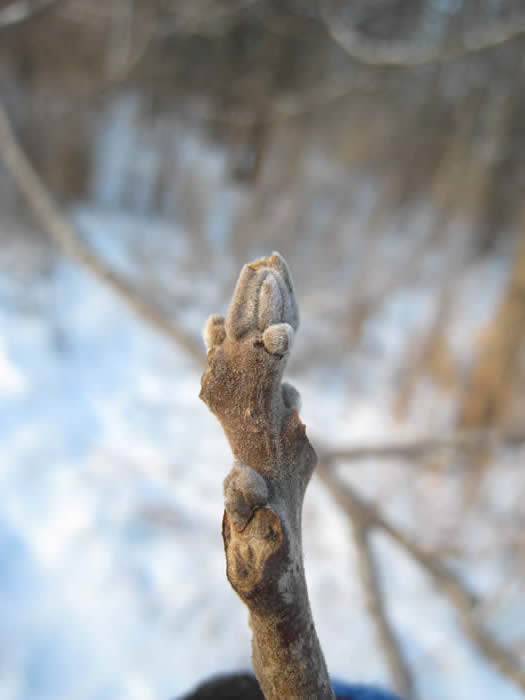
Black Walnut buds are pale grey-brown and partially hairy. The largest buds are usually located at the twig tip. Photo by Sean Fox.
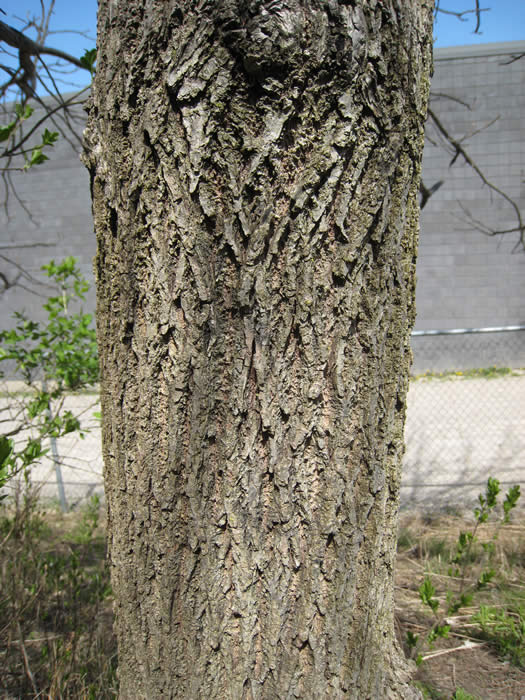
The hardy, rich wood of the Black Walnut is prized for its beautiful grain and the ease with which it can be worked. Photo by Sean Fox.
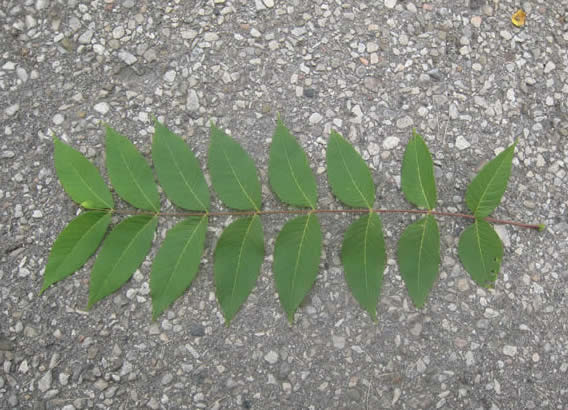
The leaves are pinnately compound. They can be confused with those of Butternut, but Black Walnut leaves usually lack a prominent tip leaflet, distinguishing them from their relatives. Photo by Sean Fox.
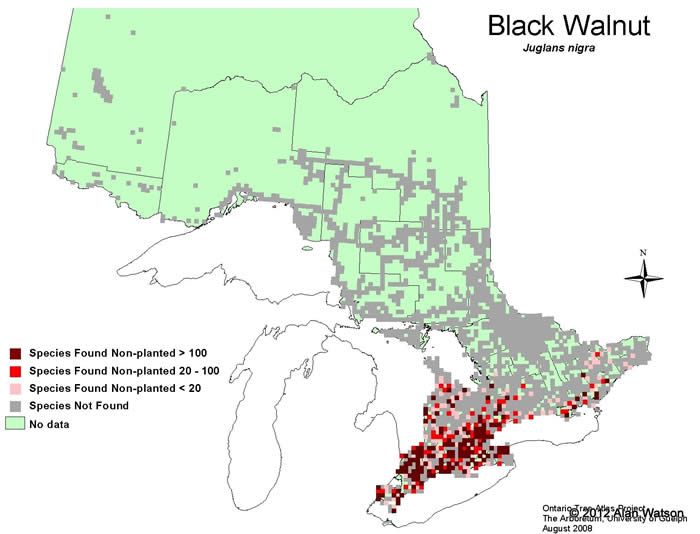
Ontario Tree Atlas map of non-planted Black Walnut. 1995-1999.
Return to tree listing page [1]
References
Farrar, J.L.. 1995. Trees in Canada. Fitzhenry & Whiteside Ltd. Toronto. ON. 504 pp.
Kershaw, L. 2001. Trees in Ontario: Including tall shrubs. Lone Pine Publishing. Edmonton. AB. 240 pp
Muma, W. 2011. Ontario Trees and Shrubs. [Online] Available: www.ontariotrees.com
OMNR, 2011. Ontario Ministry of Natural Resources: Ontario Tree Atlas. [Online] Available: http://www.mnr.gov.on.ca/en/Business/ClimateChange/2ColumnSubPage/267027.html
OMNR, 2008. Ontario’s Biodiversity: Species at Risk.
